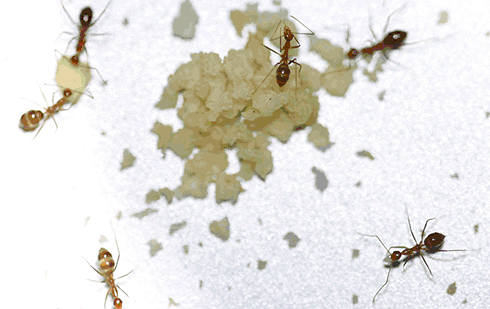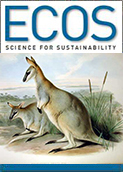
|
Published: 23 June 2014
Indigenous enterprise helping stamp out yellow crazy ants
As part of a major effort to control and eradicate one of the world’s most invasive pests, the yellow crazy ant, across northern Australia, CSIRO has been working with local Indigenous company Yolngu Business Enterprises (YBE2) to help control the spread of the pest.
Believed to have been accidentally introduced to the area during the Second World War, the ant has so far been found in 70 locations around human settlements, along creeks and in disturbed areas in eastern Arnhem Land.
Called ‘crazy’ for their erratic and frantic movements, yellow crazy ants present a serious threat to native wildlife, including other ant species. They form multi-queened 'supercolonies' of extremely high densities over large areas – around 1000 per square metre or 79 million per hectare of bush.
Their capacity for destruction has been mostly felt on Christmas Island, where crazy ant supercolonies have formed and killed more than 20 million red crabs.
Operating in north-east Arnhem Land, YBE2 is contracted to undertake rehabilitation work at Rio Tinto Alcan’s Gove Bauxite mine, within an area riddled with the species.
Crazy ant infestations pose a significant challenge to mining and effective rehabilitation, as digging up the earth risks spreading them. The site needs to be continually monitored and treated to clear it of any colonies.
CSIRO ant ecologist, Dr Ben Hoffmann, has worked with the YBE2 team in the field developing protocols to monitor and identify ant species, and to collect data for accurate GPS mapping of infestations.
About 200 hectares of infested area was mapped by YBE2 staff and has undergone treatment. Afurther 200 hectares has been mapped for treatment later this year.
The project enabled YBE2 the capacity to secure the contract to control yellow crazy ants on the mine site and will potentially open up new business opportunities.
Source: CSIRO




